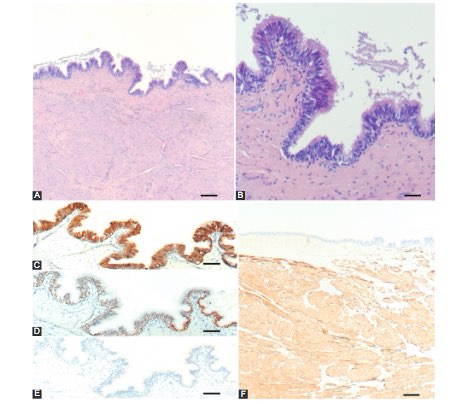Lingual cyst with respiratory epithelium: The importance of differential diagnosis
DOI:
https://doi.org/10.17305/bjbms.2020.4716Keywords:
Lingual cyst with respiratory epithelium, differential diagnosis, tongue, lingual cystsAbstract
The lingual cyst with respiratory epithelium (LCRE) is a very rare congenital cyst of the tongue, floor of the mouth, pharynx, or hypopharynx with 21 cases reported in the literature [1,2]. Differential diagnosis is very important for patients presenting with lingual cysts, as this may impact treatment and follow-up. The LCRE should be included in the different diagnosis of a dermoid cyst [3], teratoid cyst [4], epidermoid cyst [5], thyroglossal duct cyst [6], lymphoepithelial cyst [7], and mucocele or ranula [8]. Each entity has a peculiar histologic presentation, although the clinical aspect may be very similar [1]. The dermoid cyst is lined by a keratinized squamous epithelium and contains skin appendages in the cyst. The epidermoid cyst is similar to the dermoid cyst but is characterized by non-keratinized squamous epithelium and has a lumen filled with keratin. The teratoid cyst contains derivatives of the endoderm, ectoderm, and/or mesoderm. The thyroglossal duct cyst is usually lined by columnar, stratified squamous epithelium, or an intermediate transition type of epithelium, with the mandatory presence of thyroid tissue in the cyst wall. The lymphoepithelial cyst is identified by the presence of lymphoid aggregates in the cyst wall. A mucous retention cyst, so-called mucocele or ranula, contains mucin and granulation tissue [1].
Read the full text [PDF]
Citations
Downloads

Downloads
Additional Files
Published
Issue
Section
Categories
How to Cite
Accepted 2020-05-20
Published 2021-06-01









